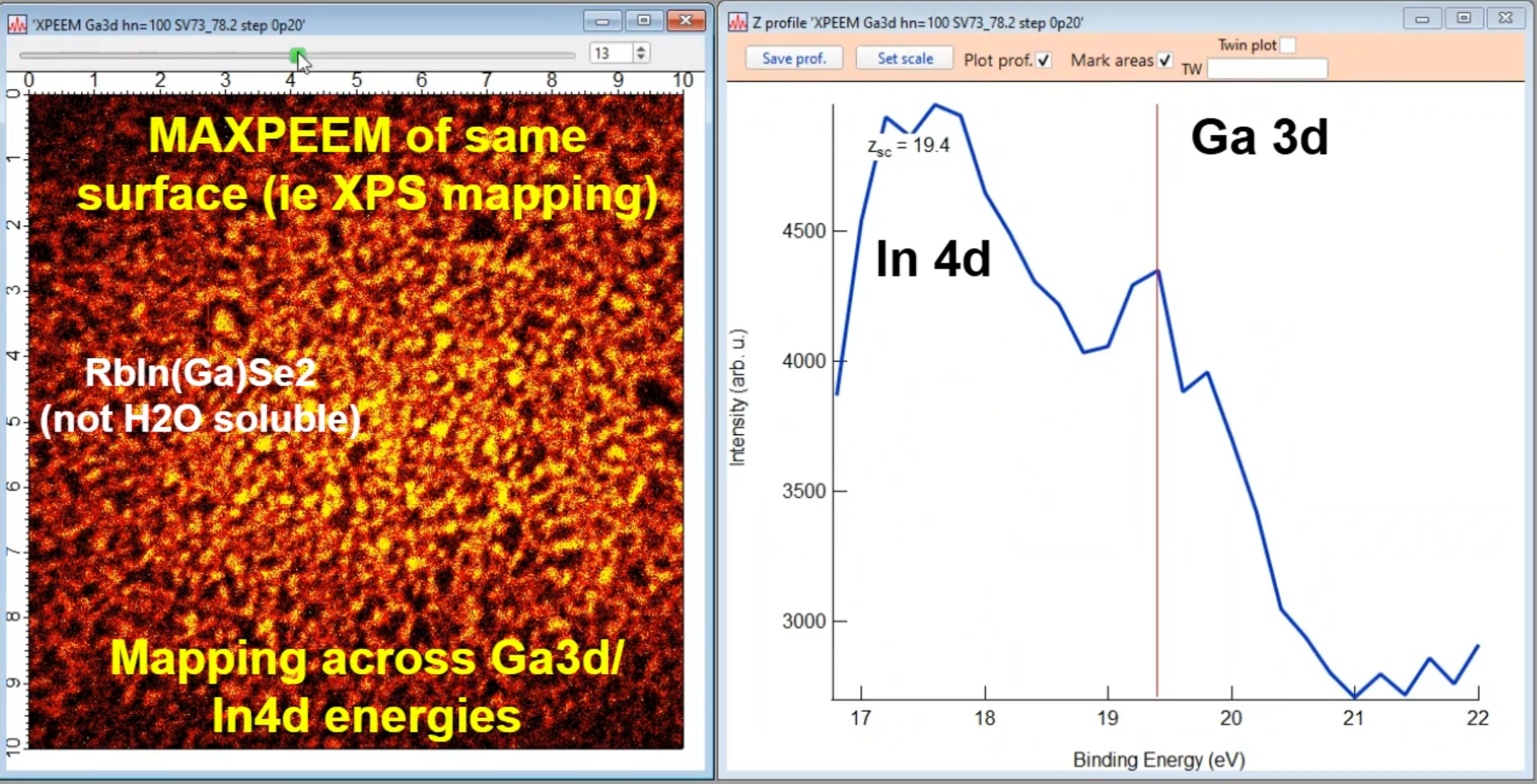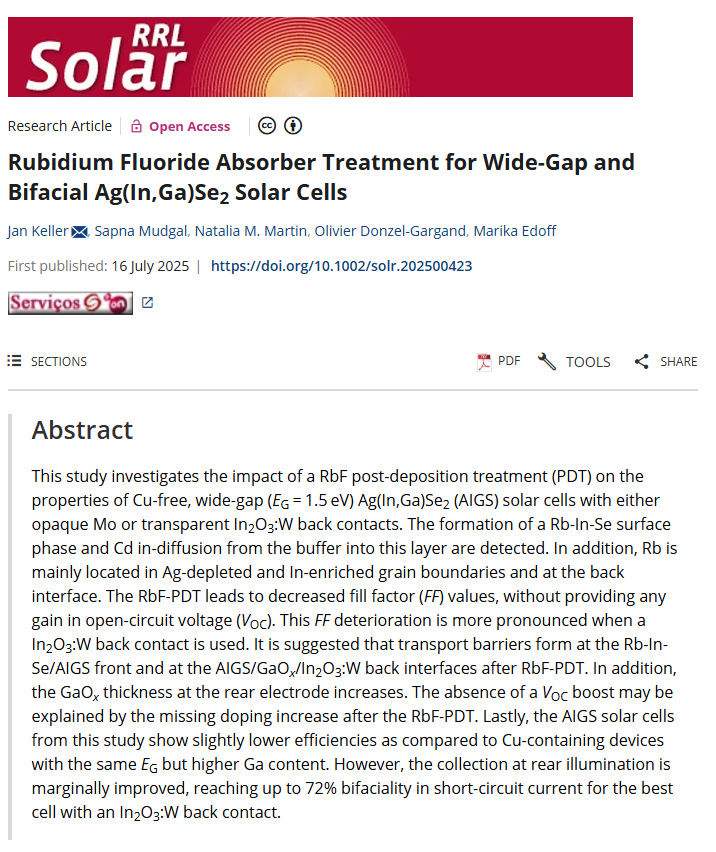New Results on Transparent AIGS Cells for Tandem Use
A recent publication from the SITA consortium offers new perspectives on the role of rubidium fluoride (RbF) post-deposition treatment (PDT) in Cu-free wide-bandgap Ag(In,Ga)Se₂ (AIGS) solar cells with transparent back contacts—key components for tandem architectures.
In this study, researchers explored RbF-PDT on Cu-free AIGS absorbers, aiming to achieve a ~1.5 eV bandgap using a [Ga]/([Ga]+[In]) ratio as low as 50%. Contrary to expectations, the absence of copper did not lead to performance improvement. Instead, RbF-PDT introduced a significant transport barrier, particularly when using tungsten-doped indium oxide (In₂O₃:W) back contacts compared to molybdenum (Mo).
Microscopically, the RbF-PDT altered the absorber and back contact interfaces, possibly increasing conduction band offsets and influencing GaOx growth. Notably, most grain boundaries exhibited Ag depletion and In/Rb enrichment.
The best-performing cell, notably without RbF-PDT, demonstrated a bifaciality of 72% in short-circuit current—a remarkable achievement for CIGS-based devices—primarily attributed to full absorber depletion.
This work, coordinated within SITA by Uppsala University, showcases a collaborative effort involving cell fabrication, advanced XPEEM and XPS mapping, and nanoscale analysis. It contributes significantly to understanding alkali treatments in next-generation tandem solar cells.
Read the full publication in Solar RRL: Rubidium Fluoride Absorber Treatment for Wide‐Gap and Bifacial Ag(In,Ga)Se₂ Solar Cells
MAXPEEM XPS map of a Cu-free Ag(In,Ga)Se₂ surface after RbF treatment, showing nanoscale distribution of Ga and In signals. Data and image courtesy of Jan Keller (EMPA), measured at MAX IV Laboratory.


